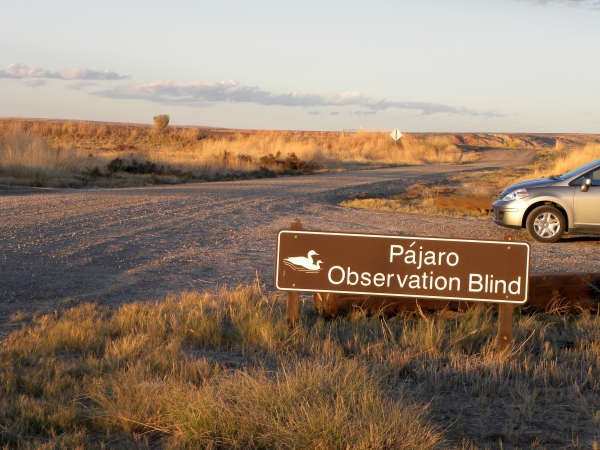
The Prairie Lake auto tour route offers visitors a closer look at various wetland and grassland habitats available to migrant and resident wildlife throughout the Refuge. Open May 1st - September 30, the tour route is gravel and may be soft and slippery early in the spring or after hard rains. While traveling along the tour route look for both shallow wetlands and deeper water along with a variety of grassland habitats. Each habitat type supports its own unique variety of wildlife throughout the year.
Shallow Wetlands
Visitors may catch a glimpse of golden plovers, great blue herons, red-winged blackbirds, or one of numerous other bird species that utilize seasonal wetlands at the Refuge. Seasonal wetlands may hold water for only a couple of weeks, or remain wet through the middle of summer. These wetlands quickly fill up in the spring with snow melt, providing a protein rich source of food for migrating waterfowl and other birds. These small seasonal wetlands are important places for male and female ducks to pair up and complete courtship and are often referred to as "pair ponds" by waterfowl biologists. Each breeding pair of ducks will seek out their own small wetland when water resources are plentiful.
Deeper Water, Different Wildlife
The deeper water in lakes and larger wetlands typically hold water all year and contains cattails and other wetland plants. These plants provide nesting areas for diving ducks such as redheads, ruddy ducks, and canvasbacks. Larger wetlands provide safe areas for broods of all species of waterfowl to hide. American white pelicans, grebes, and cormorants can also be seen in these deeper wetland habitats.
Grassland Habitats
Birds that nest on the ground, such as mallards, blue-winged teal, pheasants, grasshopper sparrows, and meadowlarks, need thick cover in which to hide their nests. Thick cover helps protect nests from red skunks, raccoons, and other predators that enjoy a tasty egg dinner. In winter, deer and pheasants use this thick cover for protection from harsh winds and cold temperatures.
